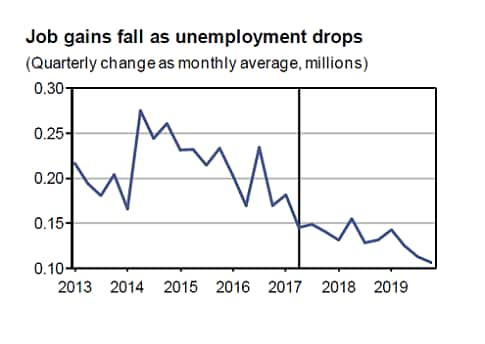US labor market slowly gaining ground
In April 2017, US job growth rebounded to a solid 211,000 from a weak 79,000 in March. Construction jobs rose to 5,000 from 1,000 in March but lagged earlier gains. Likewise, manufacturing payrolls increased but at a slower rate than before. Food service and healthcare garnered typically good job gains. Retail employment gains remain subdued compared to last year's average monthly gain of 17,000, picking up just 6,300 jobs. The US unemployment rate dropped from 4.5% to 4.4% in April—an especially impressive development given that the US labor force has expanded during the past consecutive five months.
Positive outlook predicted for US non-farm payrolls – service sector gains
S&P Global expects US non-farm payrolls will steadily increase from now to 2022. The unemployment rate should edge toward 4% by 2019 – with manufacturing jobs decreasing and service sector positions on the rise. While the unemployment rate is expected to fall, the labor force will also become increasingly productive. This should decelerate the rate of job growth from 2.2 million jobs added over the 12 months ended April 2017 to roughly 1.7 million in the year ending in the first quarter of 2018, with a further but less dramatic cooldown in 2019. After 2020, the leading edge of the boomers will have moved past age 70; the 65–69 age cohort is especially important, since its labor-force participation rate was 32.2% last year, while the 70–74 year-old group only fielded 19.2% of its members. The older retirement age for full Social Security benefits and recessionary damage to finances are playing major roles in Americans’ later retirement.




















